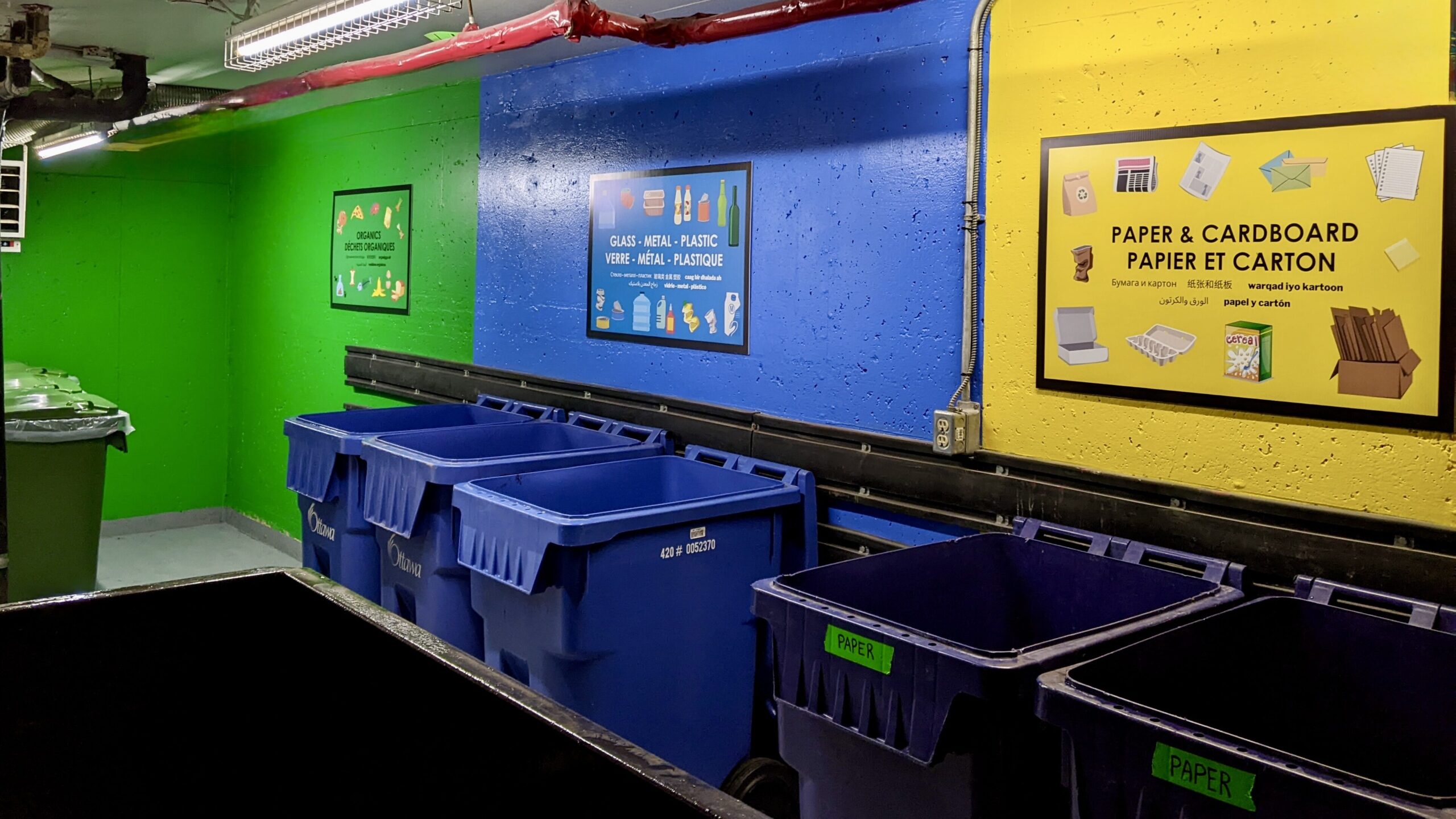Since 2011, multi-residential properties in Ottawa have had access to green bin collection. Yet more than a decade later, uptake remains low — fewer than two-thirds of buildings participate, and even those that do often see poor results.
For property managers and landlords, that’s a missed opportunity. Not only is organic waste the heaviest and most avoidable component of household garbage, but new waste diversion requirements make participation more than just voluntary.
So why hasn’t it worked, and what does?
The answer lies in understanding and addressing the barriers that prevent residents from participating.
Two types of barriers: material and immaterial
Material barriers are the physical or operational issues that make sorting difficult, such as:
- Green bins located outdoors or far from garbage chutes
- Improper bin sizing for building needs
- Poor lighting, ventilation or cleanliness in waste rooms
- Lack of accessible options for seniors or residents with mobility challenges
Immaterial barriers are behavioural or cultural. These include:
- Lack of familiarity with green bin programs, especially among newcomers
- Language barriers
- Low motivation or negative attitudes toward composting
- Social norms that discourage sorting
Both types of barriers are community-specific and identifying them is key to success.
Step one: understand your residents
The most effective way to diagnose barriers is by conducting a resident survey. This low-cost tool provides insight into both practical challenges and attitudes to waste diversion. It also builds buy-in by signalling that management values resident input.

Step two: invest in the right solutions
Once barriers are understood, solutions can be tailored to your building.
Addressing material barriers often means rethinking infrastructure:
- Bring bins indoors
- Improve signage, lighting and air quality
- Install automated door openers or more accessible carts
- Swap industrial dumpsters for bins sized for everyday use
Addressing immaterial barriers means tailoring communications:
- Provide multilingual education materials
- Use reminders, signage and gamification tools to build habit
- Offer peer mentoring or incentives through resident champions
This approach, known as community-based social marketing, focuses on engagement and customization. It’s proven to be far more effective than flyers or mass campaigns alone.
Real-world results
EnviroCentre implemented this approach in 2022 across several Ottawa Community Housing highrises. Within a year:
- Glass, metal and plastic collection increased by 196%
- One building reduced landfill garbage by 56% after adding organics collection
That’s the power of pairing the right infrastructure with smart behaviour-change strategies.
Ready to improve waste diversion in your building?
Making organics diversion work in multi-residential settings requires more than bins — it takes a strategy built on community insight and design thinking. The benefits are clear:
- Cleaner waste rooms
- Lower garbage disposal costs
- Happier, more engaged tenants
- Future-ready buildings
EnviroCentre works with property managers, landlords and housing providers across Ottawa to improve diversion rates and reduce waste at the source. Looking to improve waste diversion in your building? Let’s talk!
